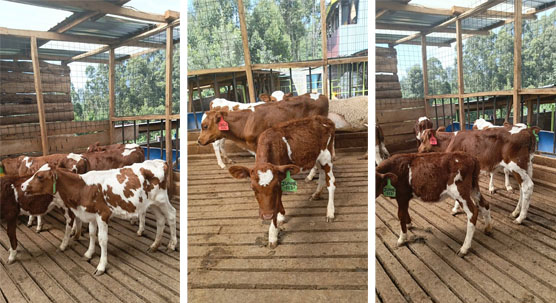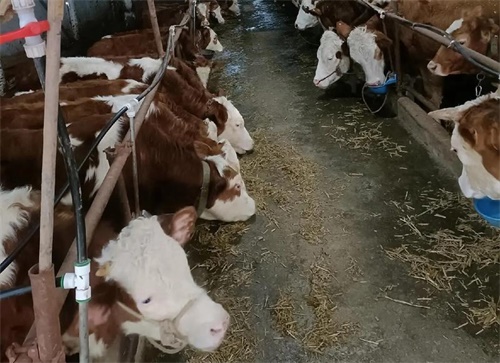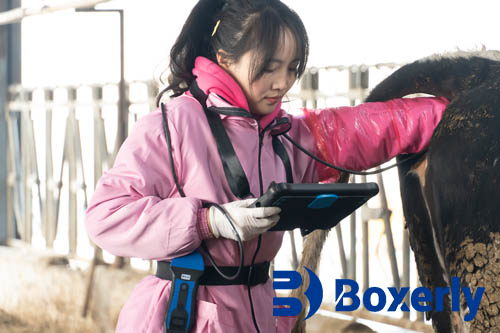For livestock farmers, veterinarians, and animal breeders alike, ultrasound technology has revolutionized animal health monitoring and reproductive management. Choosing the right Veterinary ultrasound machine is more than just a technical decision—it’s an investment that directly impacts animal welfare, farm efficiency, and long-term profitability.
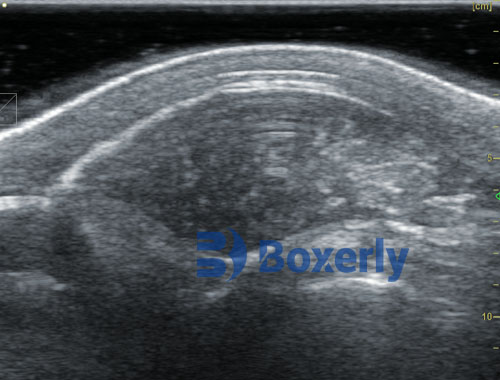
Veterinary ultrasound machines come in various configurations, with differences in imaging quality, portability, functionality, and cost. For buyers—especially those without technical backgrounds—navigating the market can be overwhelming. This article breaks down the key points to consider when purchasing a veterinary ultrasound device, drawing insights from global farm practices and real-world user feedback to help you make an informed decision.
Understanding the Role of Veterinary Ultrasound in Animal Management
Veterinary ultrasound, particularly B-mode ultrasonography, is a non-invasive, real-time imaging technique that provides visual assessments of soft tissue structures, organs, reproductive tracts, and even muscle and fat distribution in farm animals. Its applications span from pregnancy detection in sows and cows to monitoring uterine recovery and diagnosing internal pathologies.
In Europe, North America, and Australia, the use of ultrasound machines on farms has become increasingly mainstream. Farmers in these regions emphasize that choosing the right ultrasound device has transformed routine tasks into data-driven management decisions.
1. Image Clarity: Why Screen Resolution Matters
One of the most critical factors in ultrasound performance is screen clarity. High-resolution imaging is essential for identifying subtle anatomical structures, distinguishing between healthy and abnormal tissue, and confirming pregnancy at an early stage.
Ultrasound users from the UK and Canada frequently report that blurry or low-contrast images can lead to misinterpretation, reducing diagnostic accuracy. Modern machines now offer HD displays with grayscale depths of 256 levels or more. These allow for nuanced visualization of uterine linings, fetal development, and follicular structures.
Practical Tip:
Look for screens that are at least 7 inches in size with a resolution of 800x600 pixels or higher. Sunlight-readable screens are also essential for outdoor use.
2. Portability and Weight: Field-Readiness is Essential
For large-animal vets and mobile livestock operations, portability is non-negotiable. Ultrasound devices must be rugged, waterproof, and lightweight enough for one-handed use. In the U.S. Midwest and Australian outback, where vets often cover dozens of farms in a day, a compact machine with good battery life is crucial.
Some farmers in rural areas have shifted from traditional console-style machines to handheld or laptop-style devices with shoulder straps or wrist mounts. These not only free up one hand but also minimize operator fatigue during long scanning sessions.
Practical Tip:
Choose machines that weigh under 2.5 kg, preferably waterproof (IP56 rating or higher), with a working time of 5–7 hours per battery cycle.
3. Price and Value: Balancing Budget with Performance
Ultrasound machine pricing can range from a few hundred to several thousand dollars. While price is always a factor, overseas farmers caution against buying solely based on cost. In North America, veterinarians highlight that poorly built or unsupported machines may fail after limited use, resulting in higher long-term costs.
The key is to balance price with essential features. Do you need Doppler capability? Is a convex probe sufficient, or do you also need a linear probe for small ruminants or tendon imaging? The cost should align with your intended use case.
Practical Tip:
For mixed-use farms handling cattle, sheep, and pigs, devices like the BXL-V50 offer a balanced mix of price, durability, and functionality. It supports backfat and pregnancy checks, includes a high-definition display, and is IP56-rated for rugged environments.
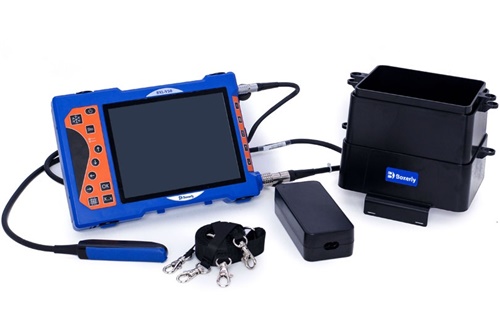
4. Battery Life and Power Management
Farmers across Europe stress that short battery life can cripple workflow. Whether performing rectal exams in cows or scanning for fetal heartbeats in sows, it's frustrating to stop mid-task for a recharge.
Modern veterinary ultrasounds are now equipped with lithium batteries that last over 6 hours on a single charge. Some models also support vehicle charging or battery swaps in the field.
Practical Tip:
Select a machine with at least 6 hours of working time. If available, choose models with detachable batteries so that you can carry a spare for backup.
5. Probe Type and Compatibility
Different animal species and diagnostic goals require different probe types. Large cattle typically need convex probes for abdominal and rectal imaging. Smaller animals or tendon exams require linear probes. Some ultrasound machines support interchangeable probes, offering versatility across species.
From New Zealand to Germany, many mixed farms emphasize the importance of probe durability. Farmers using cheaper probes often report quicker wear and tear, especially in high-volume settings like swine farms.
Practical Tip:
Choose a system that allows for flexible probe replacement. If working with multiple species, opt for a multi-probe unit with easy switching capability.
6. Software Features and Image Storage
As more farms embrace digital herd management, ultrasound software must keep up. Devices that allow for storing images, measuring fetal size, and tracking scan records are becoming increasingly popular.
Veterinarians in the Netherlands, for instance, use image storage to document fetal viability and share reports with clients. Bluetooth or USB export options make it easy to transfer data for recordkeeping.
Practical Tip:
Ensure the machine includes measurement functions and digital storage. Cloud or USB data transfer options are a bonus for maintaining medical records.
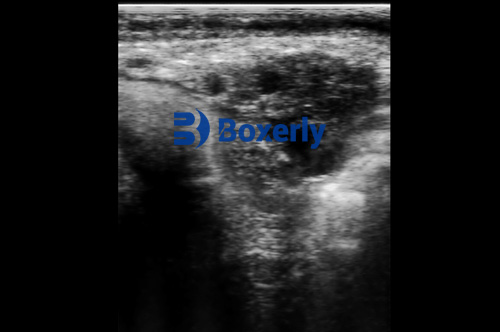
7. After-Sales Support and Training
Purchasing the right machine is only the beginning. Good after-sales support, training availability, and repair service are essential, especially for international buyers. Many American and Australian veterinarians stress the importance of responsive technical support when issues arise.
Some manufacturers also provide remote training sessions or video tutorials, which are invaluable for those new to ultrasound technology.
Practical Tip:
Only purchase from companies that offer clear technical support channels, repair services, and warranty coverage. Ask about training resources before you commit.
8. Ergonomic Design and Ease of Use
Farmers and veterinarians performing multiple scans per day must consider ergonomics. Machines should be intuitive, with accessible button layout and one-handed operation.
Veterinary users in Sweden and Finland frequently mention that poorly designed keypads or software menus slow them down. Modern models feature customizable shortcuts, touch interfaces, and glove-friendly controls.
Practical Tip:
Demo the interface if possible. Machines with both left- and right-hand button arrangements offer greater comfort during long workdays.
9. Application Versatility
If your practice or farm handles diverse animals—like dairy cows, pigs, goats, dogs, or horses—then application versatility matters. Devices that can adapt to different diagnostic scenarios save money and space.
In Canada, mixed-practice veterinarians often invest in ultrasound machines that handle reproduction, lameness, soft-tissue diagnostics, and even small-animal abdominal imaging.
Practical Tip:
Select a model that can be used across multiple animal types and conditions without sacrificing image quality or function.
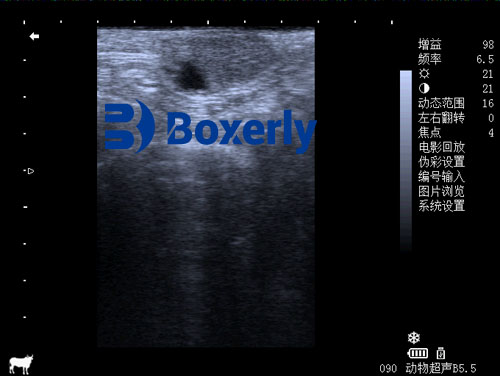
Final Thoughts: Choosing the Ultrasound That Works for You
Veterinary ultrasound technology is now more accessible, more powerful, and more portable than ever. But choosing the right one requires an understanding of both your operational needs and the machine’s capabilities. Whether you're scanning a high-producing dairy cow or checking pregnancy in backyard sows, the right ultrasound machine should be accurate, durable, and easy to use.
Farmers around the world are already benefiting from making smart ultrasound purchases—cutting costs, improving herd health, and making timely decisions with confidence.
References:
Beef Cattle Institute. (2023). Use of Ultrasound for Growth Evaluation in Cattle. Retrieved from: https://www.beefcattleinstitute.org/ultrasound-growth
Whitaker, D. A., & Smith, E. (2021). Veterinary Ultrasonography in Food-Producing Animals. Journal of Veterinary Imaging.
British Cattle Veterinary Association (2022). Practical Guidance on Bovine Ultrasound Use. Retrieved from: https://www.bcva.org.uk
DairyNZ (2023). Ultrasound for Dairy Herd Reproduction Management. Retrieved from: https://www.dairynz.co.nz/animal/reproduction/ultrasoun
link: https://www.bxlimage.com/nw/1250.html
tags: